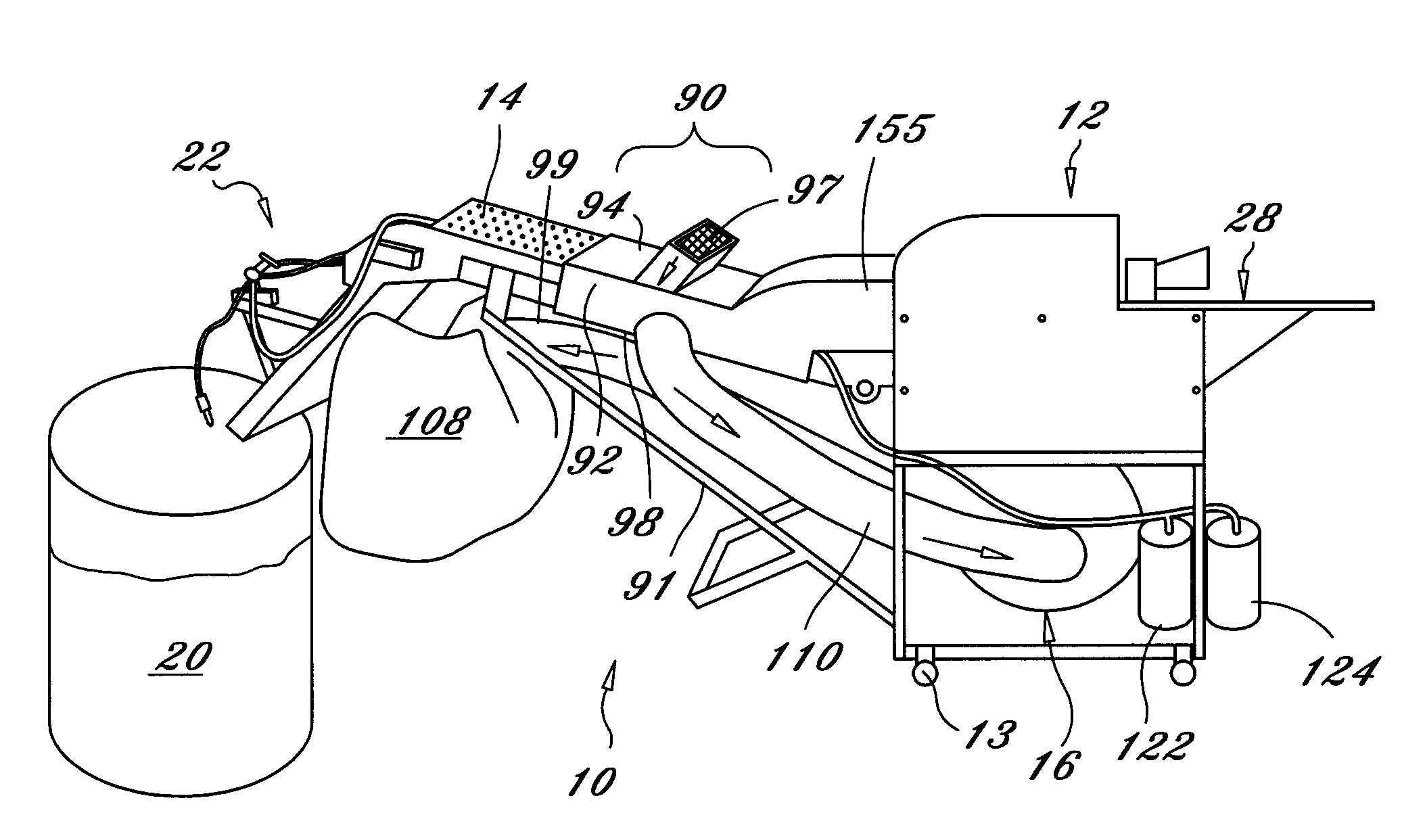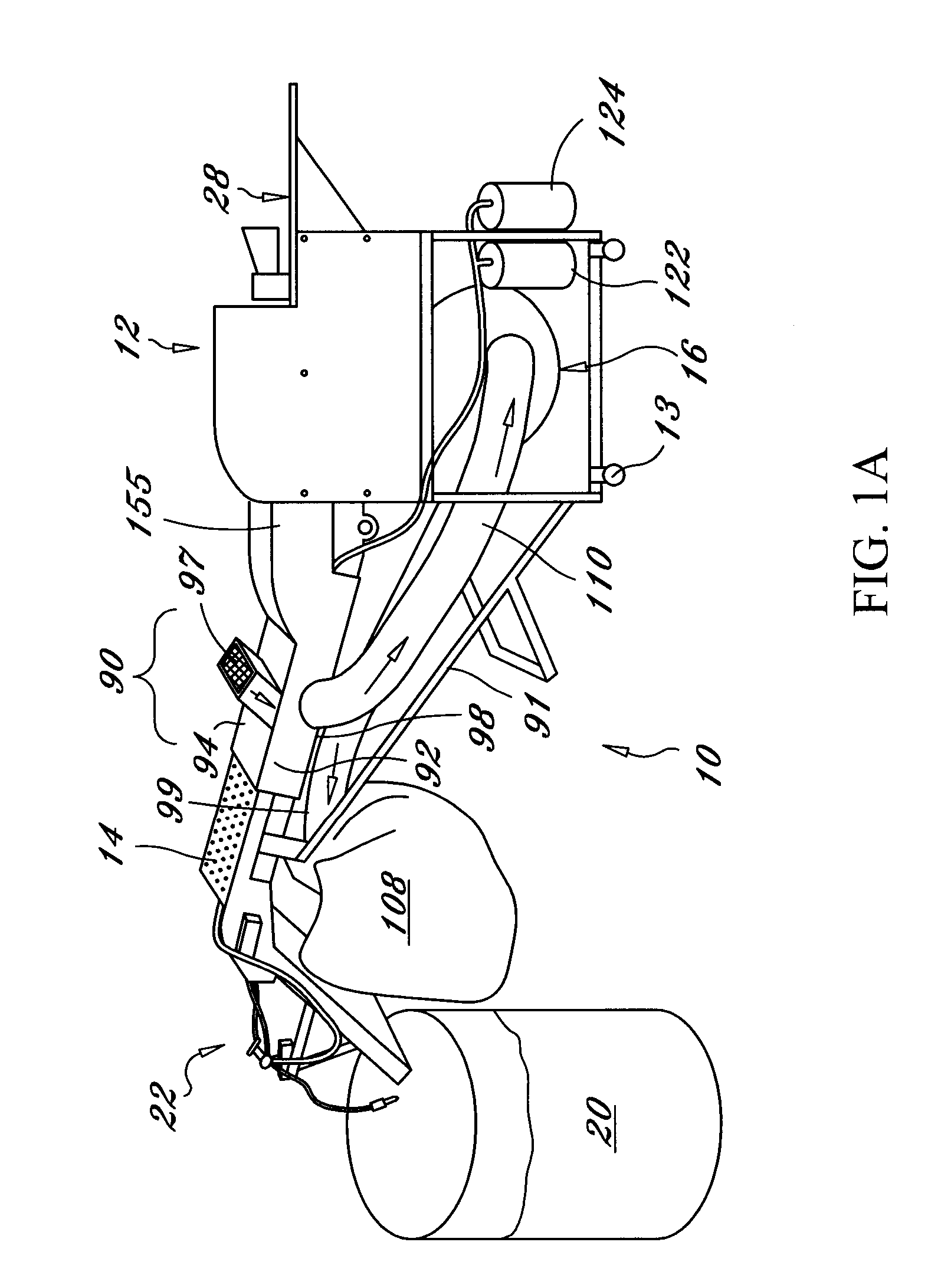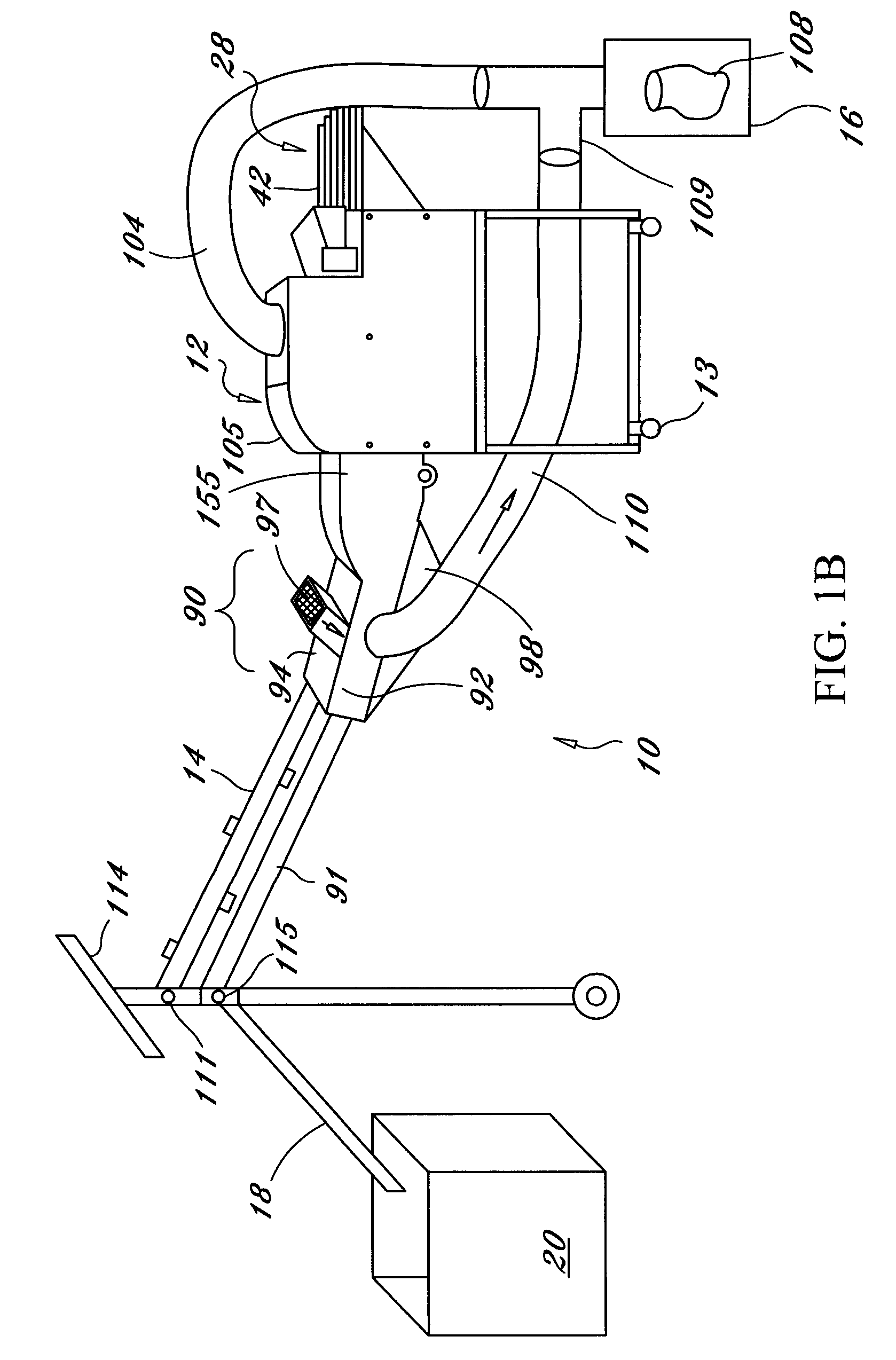Loose fill packing material and apparatus for manufacturing same
a packing material and loose fill technology, applied in the field of loose fill packing material and manufacturing equipment, can solve the problems of static electricity that can cause substantial problems for sensitive electrical components, items packed in peanuts tend to shift, settle or creep inside, and are expensive bubble wraps, etc., to achieve the effect of reducing static electricity formation, easy biodegradability, and convenient manufacturing
- Summary
- Abstract
- Description
- Claims
- Application Information
AI Technical Summary
Benefits of technology
Problems solved by technology
Method used
Image
Examples
Embodiment Construction
[0036]Referring now to FIGS. 1A and 1B, the apparatus 10 of this invention is described generally at 10. The apparatus 10 comprises a shredding mechanism 12, a conveyor 14, and a suction device 16. In one embodiment, a generally flat plate 19 directs the product strips into a bag or hopper 20. In an embodiment used for high volume, shown in FIG. 1B, a sifter plate 18 directs the strips to the bag or hopper 20.
[0037]A slitter device (not shown), either portable or attached to the shredder device 12, is preferably included as part of the apparatus 10. Throughout this application, the term shredding shall mean the creation of small pieces, which is preferably performed by a unique cutting process to reduce the formation of dust in the operation of the present invention.
[0038]It is also preferred that a means for spraying 22 is included in the apparatus 10, as shown in FIGS. 1A, 1B, 2 and 10. The means for spraying 22 is preferably for spraying a liquid having microbicidal, sanitizing, ...
PUM
 Login to View More
Login to View More Abstract
Description
Claims
Application Information
 Login to View More
Login to View More - R&D
- Intellectual Property
- Life Sciences
- Materials
- Tech Scout
- Unparalleled Data Quality
- Higher Quality Content
- 60% Fewer Hallucinations
Browse by: Latest US Patents, China's latest patents, Technical Efficacy Thesaurus, Application Domain, Technology Topic, Popular Technical Reports.
© 2025 PatSnap. All rights reserved.Legal|Privacy policy|Modern Slavery Act Transparency Statement|Sitemap|About US| Contact US: help@patsnap.com



